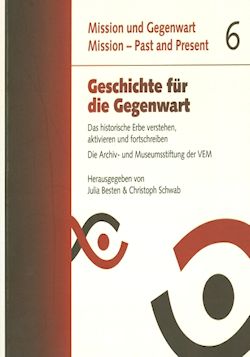


It a certain point in its evolution, any organisation whose beginnings reach deep into the past faces central and inevitable questions about its historical inheritance. This generally occurs after there has been a restructuring.
How does one interface with historical documents that were collected over several time periods, and whose numbers, as work continues, are steadily increasing? Is a proper archival and preservation process the right thing to do, in the sense of administering general requirements in an orderly fashion and according to the rules? Is it enough? Or are there obligations that extend beyond the valid claims from individual members of the organisation itself, or from third parties whose historical questions directly or indirectly affect this inheritance? Finally, is there a will within the organisation to open up its archives and collections to other institutions and potential users who might be interested in working with this material as well? Does the organisation seek to cooperate with them in order to work through its own past scientifically, to gain new insights and establish networks that will make it possible to contextualise similar holdings?
This book attempts to answer the questions posed here, about dealing openly and actively with a historical inheritance that is over 200 years old, in an exemplary way that is relevant in the present, using the work of the Archives and Museum Foundation of the UEM. On the basis of selected examples from the collections, readers will get an initial idea of the character and qualitative significance of individual documents and artefacts from the written and picture archives, the library, and the ethnological museum of the foundation. Furthermore the area of the foundation’s work that goes far beyond the archiving, preservation, and administration of these holdings is introduced, presenting the quintessential work and services performed by the foundation.
In addition, there are answers that show how to deal with the historical inheritance of the UEM, to care for it actively and responsibly and to develop it further. Last but not least, this is also an attempt to create meaningful added value for the present and for future project work with the collections, by dealing openly and objectively with the past. This added value should benefit not only the members of the parent organisation, but the largest possible number of diverse social groups in Germany and abroad as well.
Under these links you will find further studies of the history and the missionary work of the UEM United Evangelical Mission in Wuppertal/Germany, among them an English translation of this book:
© 2026 by Rüdiger Köppe Verlag – www.koeppe.de